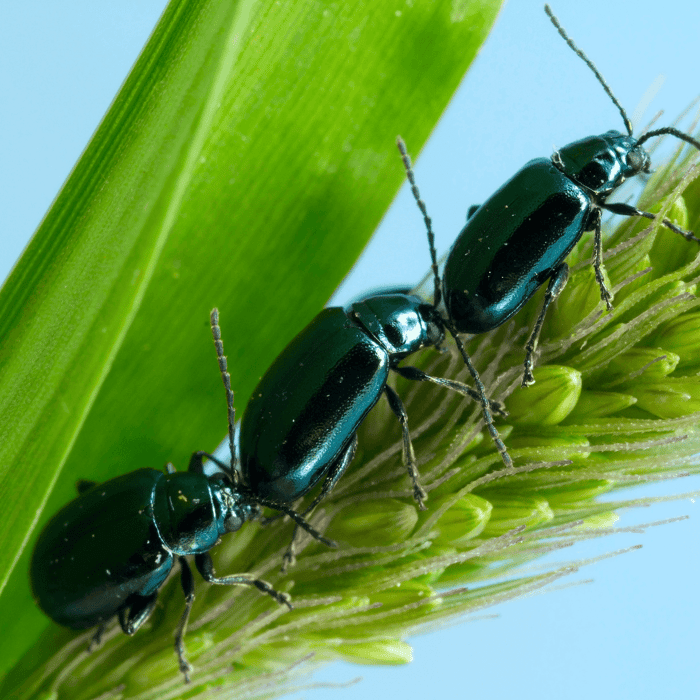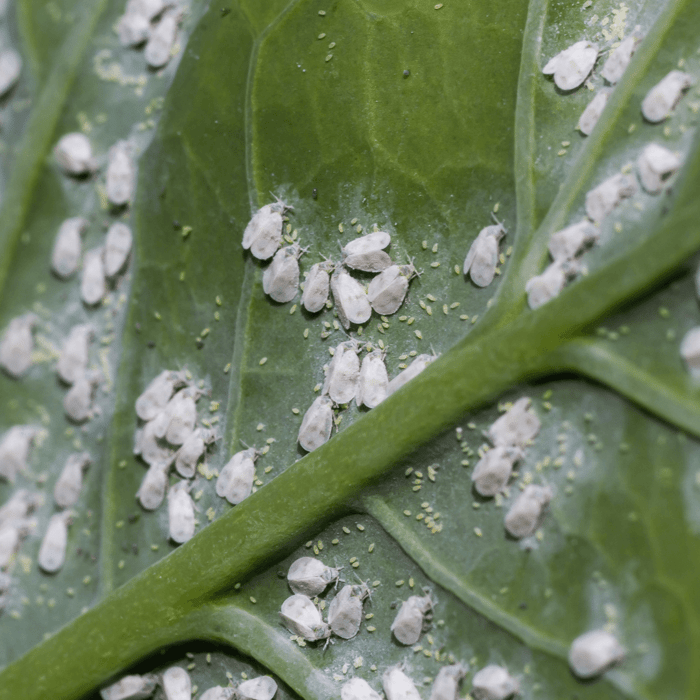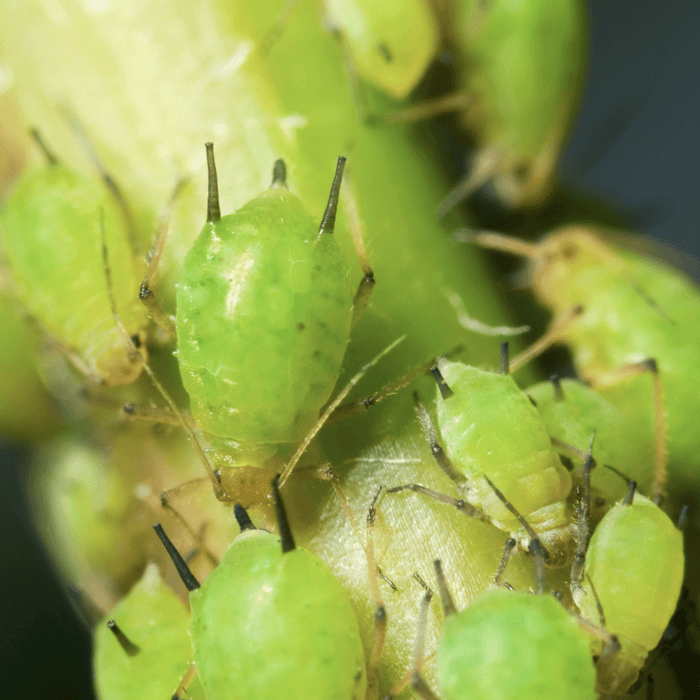Flea beetles, the tiny yet destructive garden pests, are known for their penchant for damaging various vegetable plants, particularly when young and vulnerable. This comprehensive guide provides a step-by-step strategy to mitigate the harmful effects of flea beetles in your garden. So let's now wait and learn how to get rid of flea beetles in your garden.
Decoding Flea Beetles: Life Cycle and Varieties
Unveiling the Life Cycle of Flea Beetles
Understanding the life cycle of insect pests such as flea beetles is fundamental to controlling their population. After surviving the winter hidden in leaf litter and garden debris, adult flea beetles emerge from the soil with the arrival of warmer weather, typically in late spring or early summer. They feast for a few weeks, laying eggs around the base of their chosen host plants. The hatching larvae then burrow into the soil, feeding on plant roots for 2-3 weeks before entering their pupal stage. After another fortnight, a new generation of adult beetles emerges, ready to perpetuate the cycle. By understanding this cycle, gardeners can target interventions to disrupt the beetles at various life stages, enhancing the effectiveness of control measures.
Identifying Different Types of Flea Beetles
Many flea beetle species exist, but the potato flea beetle is one of the most common offenders. These inch-long, shiny black beetles primarily target potato plants, but they don't stray from feeding on tomato, eggplant, or pepper plants either. Another common type is the striped flea beetle which favors cruciferous vegetables. The spinach flea beetle, as you might guess, prefers spinach. Recognizing the types of flea beetles you're dealing with can guide your control efforts, as different beetles have different preferences and behaviors.
Detecting Flea Beetle Damage
Flea beetles have a distinct feeding pattern that's easily recognizable. They feed on the leaves of plants, particularly young plants, leading to visible damage. Flea beetle infestations typically result in small round holes in the leaves, often described as looking like bullet holes. As the infestation intensifies, these holes may merge, creating larger areas of damage. Flea beetles can also transmit bacterial diseases like wilt and blight, exacerbating plant damage. Early detection of these signs can help you intervene before flea beetles severely harm your garden.
Preemptive Measures Against Flea Beetles: Gardening Best Practices and Trap Crops
Implementing Effective Gardening Practices
Prevention is always better than cure, and preventing flea beetles starts with good gardening practices. Regularly clearing leaf litter and other garden debris can eliminate potential overwintering sites for flea beetles. Crop rotation is another effective strategy that disrupts the beetles' life cycle, making it harder for them to establish themselves in your garden. Delaying your planting until later in the spring can also help, as it can allow the peak emergence of adult flea beetles to pass before your plants are in the ground and vulnerable.
Deploying Trap Crops
Trap crops are plants that flea beetles find more attractive than your main crops. By planting these in your garden, you can lure flea beetles away from your valuable plants. They can be planted around the perimeter of your garden or interspersed among your main crops to effectively divert the beetles. Common trap crops for flea beetles include radishes and mustard plants. These sacrificial plants can save your main crops from significant damage.
Protective Row Covers: Shielding Your Plants
Row covers are a simple and effective physical barrier that can prevent flea beetles from reaching your precious plants. Made from lightweight, permeable material, these covers are spread over your plants, preventing flea beetles from feeding while allowing sunlight and water to reach your plants. Install these covers right after planting to provide immediate protection to young plants most susceptible to flea beetle damage. Be sure to remove the covers when the plants start flowering to allow access for pollinators.
In addition to protecting against flea beetles, row covers can provide a protective barrier against other insect pests and even some diseases. They also create a microclimate that can help speed up plant growth, particularly in the early season when conditions might still be a bit cool for some plants.
Diatomaceous Earth: Nature's Pesticide
Diatomaceous earth is a natural, non-toxic powder derived from the fossilized remains of tiny aquatic organisms known as diatoms. Its abrasive and moisture-absorbing qualities make it lethal to many insects, including flea beetles.
When applied around the base of your plants or dusted on the foliage, diatomaceous earth can effectively control flea beetles. The powder causes the beetles to dehydrate and die, protecting your plants. Ensure to maintain a thin, even layer and reapply after heavy rain or watering, as it can be washed away.
Despite being a natural product, diatomaceous earth should be used judiciously. It can also kill beneficial insects, so try to apply it where only the targeted pests will come into contact with it.
Planting Resistant Varieties: The Power of Heirloom Seeds
Choosing resistant plant varieties can make your garden less appealing to flea beetles. Certain heirloom varieties have shown less susceptibility to flea beetle infestations, making heirloom seeds a valuable tool in your flea beetle control arsenal.
Check with your local extension service or seed store, such as Gardeners Basics, to learn more about resistant varieties suitable for your area. Planting diverse vegetable seeds can also help keep flea beetles and other pests in check.
Chemical Control: A Last Resort Against Flea Beetles
You might consider chemical control if non-chemical methods fail to control flea beetle populations effectively. Various insecticides are labeled for use against flea beetles, but they should be used sparingly and as a last resort. Follow the product instructions for safe and effective use.
Chemical control methods can harm beneficial insects and disrupt the garden ecosystem. Therefore, they should be used only when other control methods have proven insufficient.
Integrated Pest Management: The Holistic Approach
Remember that a comprehensive and integrated pest management strategy is the most effective defense against flea beetles or garden pests. Such a plan combines various methods, including:
- Implementing cultural practices
- Using trap crops
- Installing physical barriers
- Applying natural pesticides
- Planting resistant varieties
- Resorting to chemical control when necessary
Combining these methods will provide the most effective control of flea beetles. By understanding flea beetle behavior and life cycle and using this information to guide your control efforts, you can keep your garden healthy and productive.
 Frequently Asked Questions - How to Get Rid of Flea Beetles
Frequently Asked Questions - How to Get Rid of Flea Beetles
1. What are flea beetles?
Flea are small jumping beetles of the Chrysomelidae family, known for their destructive impact on vegetable and garden plants. They are particularly harmful to young plants.
2. How do flea beetles damage plants?
Flea beetles feed on the foliage of plants, particularly young plants, leaving behind small, round holes often described as "shotholes." In severe infestations, these holes may merge into larger areas of damage. They can also transmit diseases like bacterial wilt and blight, harming plants.
3. What do flea beetles look like?
Flea beetles are tiny, often less than an inch long. Their color varies by species, ranging from black, bronze, bluish, or metallic gray. Some species have stripes. They have large hind legs, which enable them to jump when disturbed.
4. How can I prevent flea beetles in my garden?
Good gardening practices such as crop rotation and regularly cleaning leaf litter and garden debris can help prevent flea beetles. Using row covers, planting trap crops, and choosing resistant varieties, such as certain heirloom varieties, can also help. Diatomaceous earth can be used as a natural pesticide.
5. What are trap crops?
Trap crops are planted more attractive to pests than the main crops. They are used to divert pests away from valuable plants. Radishes and mustard plants are often used as trap crops for flea beetles.
6. What is diatomaceous earth, and how can it help?
Diatomaceous earth is a non-toxic powder made from the fossilized remains of tiny aquatic organisms known as diatoms. It can be sprinkled around the base of plants or on the foliage to control flea beetles. It works by causing the beetles to dehydrate and die.
7. When should I consider using chemical control for flea beetles?
Chemical control should be your last resort when all other methods have effectively failed to control the flea beetle population. Always choose insecticides labeled for use against flea beetles and follow the product instructions for safe and effective use.
Chemical control can harm beneficial insects and disrupt the garden ecosystem, so it should be used judiciously.
In conclusion, despite the potential for significant damage that flea beetles represent, many methods are at your disposal to effectively control these persistent pests. By implementing a multi-faceted approach, you can protect your garden and ensure a bountiful harvest. Happy gardening!







